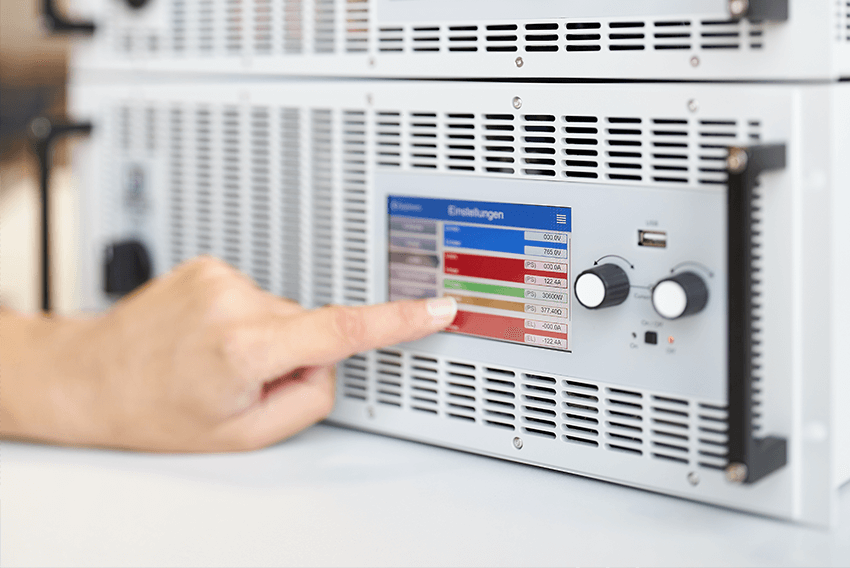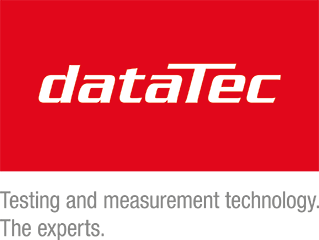#statusMessage#
Do you want to start the compare now?
#statusMessage#
Do you want to start the compare now?

Our electromagnetic environment is heavily burdened due to the multitude of transmitters and sources of interference pre...

Automated test and measurement systems that are fully connected with instrumentation and test data can significantly inc...

Temperature is one of the most common risk factors in industry. Overheating can disrupt processes, reduce quality or cau...

Electric vehicles are the future - but what happens to the batteries when they can no longer be used in cars? Efficient ...
Network analysis at the highest level – with modern network analyzers you achieve precise and meaningful results in the characterization of high-frequency components and systems. Our experts support you in the selection, operation, and optimal utilization of these versatile measuring instruments. Discover why network analysis is indispensable in high-frequency technology, which typical challenges arise, and how you can successfully overcome them.
A Vector Network Analyzer (VNA) is a specialized measuring instrument for the characterization and analysis of high-frequency (RF) components and systems, such as amplifiers, filters, couplers, or mixers. A VNA measures the reflected and transmitted portions of a signal that is coupled into a transmission line, partially reflected back toward the source (depending on impedances), and effectively transmitted to the receiving component, such as an antenna.
Operating principle: An integrated signal generator sends a signal with a known frequency, amplitude, and phase to a Device Under Test (RF component). The excitation of the circuit is measured, providing the so-called scattering parameters (S-parameters). The test object reflects part of this signal, while the remaining portion passes through, where it is modified (attenuated, amplified, phase-shifted, mixed) and exits at the DUT output as a transmitted signal. Due to mismatch at the load, part of the transmitted signal may again be reflected.
Efficient power transfer is a fundamental requirement of modern communication systems. To transmit or receive RF signals without distortion, the impedances of transmission lines, antennas, amplifiers, etc., must be properly matched to the signal source. Impedance mismatches occur when the real and imaginary parts of the input and output impedances between connected devices are not ideally aligned.
In Time Domain Reflectometry (TDR), frequency-domain data is converted into time-domain information using inverse Fourier transformation. This makes it possible to precisely locate where reflections, impedance discontinuities, cable faults, or disturbances occur along the signal path.
TDR is particularly relevant for analyzing printed circuit boards (PCBs), connectors, cables, or complex assemblies. Advanced analysis tools such as time gating allow specific reflections to be masked out so that only relevant signal portions are examined. Modern network analyzers additionally provide eye diagram and jitter analysis, enabling the assessment of signal quality under real transmission conditions already during the development phase.
Modern network analyzers typically feature integrated spectrum analysis functions that simplify troubleshooting and system characterization. Spectrum analysis enables the identification of spurious signals, interference, and unwanted emissions during network analysis without the need to reconnect the DUT to a separate spectrum analyzer. This significantly accelerates the measurement process since both network analysis and spectrum measurements can be performed in a single setup.
The simultaneous display of S-parameters and spectral data facilitates correlation of disturbances with specific frequency ranges or components. Spectrum analysis is particularly useful for the quick identification of interference sources, for example, in communication system development or during EMC pre-compliance testing. However, for comprehensive or certified EMC testing, a dedicated spectrum analyzer or EMI receiver is still required.
Many RF components cannot be connected directly to a network analyzer, requiring special adapters or fixtures to establish the connection. These fixtures introduce additional factors such as attenuation, phase shift, and reflections into the measurement path, potentially distorting the results.
The Automatic Fixture Removal function is a feature of modern network analyzers that automatically characterizes the fixture during measurement and mathematically removes its influence from the data (de-embedding). This improves measurement accuracy. Users can export the calculated correction data (de-embed files) and apply them to other measurement setups.
The latest instrument generations combine a wide range of specialized measurement functions into a single device. In addition to classical S-parameter analysis, they integrate features such as spectrum analysis, noise figure measurements, pulsed measurements, TDR, mixer and converter tests, as well as extensive calibration and de-embedding options. This enables a comprehensive measurement approach to characterize complex, multifunctional components and systems in a single workflow. Integration not only reduces hardware requirements but also minimizes errors caused by repeated reconnections and multiple calibrations.
The user interfaces of modern network analyzers are typically intuitive and offer automated procedures that ensure precise and reproducible results even with limited operator experience. Especially in the development of modern communication or radar systems, where multiple parameters must be monitored simultaneously, today’s all-in-one solutions provide decisive advantages in terms of efficiency, accuracy, and flexibility.
Both instruments are used to analyze electrical properties, but they differ fundamentally in measurement principle and application:
An impedance analyzer is specialized in precise measurement of resistance, capacitance, and inductance. It uses techniques such as the auto-balancing bridge or the RF I/V method to directly measure voltage and current. This allows determination of parameters such as Q-factor, dissipation factor, or material permittivity (dielectric constant).
A network analyzer focuses on the measurement of scattering parameters (S-parameters), i.e., reflection and transmission of RF components and systems. It is ideal for fast characterization of filters, amplifiers, and antennas. Its strengths are wide frequency coverage and fast measurement speed, though its accuracy for impedance values is limited. In addition, recalibration is required after each frequency change or power-up.
Summary: The impedance analyzer is better suited for detailed impedance and material measurements, especially in the low to mid-frequency range (Hz to a few hundred MHz). The network analyzer is the preferred choice for fast S-parameter measurements in the RF and microwave range.
The noise figure (NF) is a key performance parameter for amplifiers, receivers, and other RF components. It indicates how much a system degrades the signal-to-noise ratio (SNR)—in other words, how much additional noise is added to the useful signal. The noise figure is defined as the ratio of SNR at the input to SNR at the output of a system and is expressed in decibels (dB). An ideal system would have a noise figure of 0 dB.
A low noise figure is crucial for the sensitivity and performance of receiving systems, such as in radio communications or radar. Systems with a low noise figure can reliably process weaker signals, directly influencing range, reliability, and data rate. Optimizing the noise figure is therefore a central objective in the development of modern RF technology.
For precise and reproducible noise figure measurements, several factors must be considered, including:
Some questions can be answered easily and directly on the phone. Just call us. Our experts will be happy to assist you.

